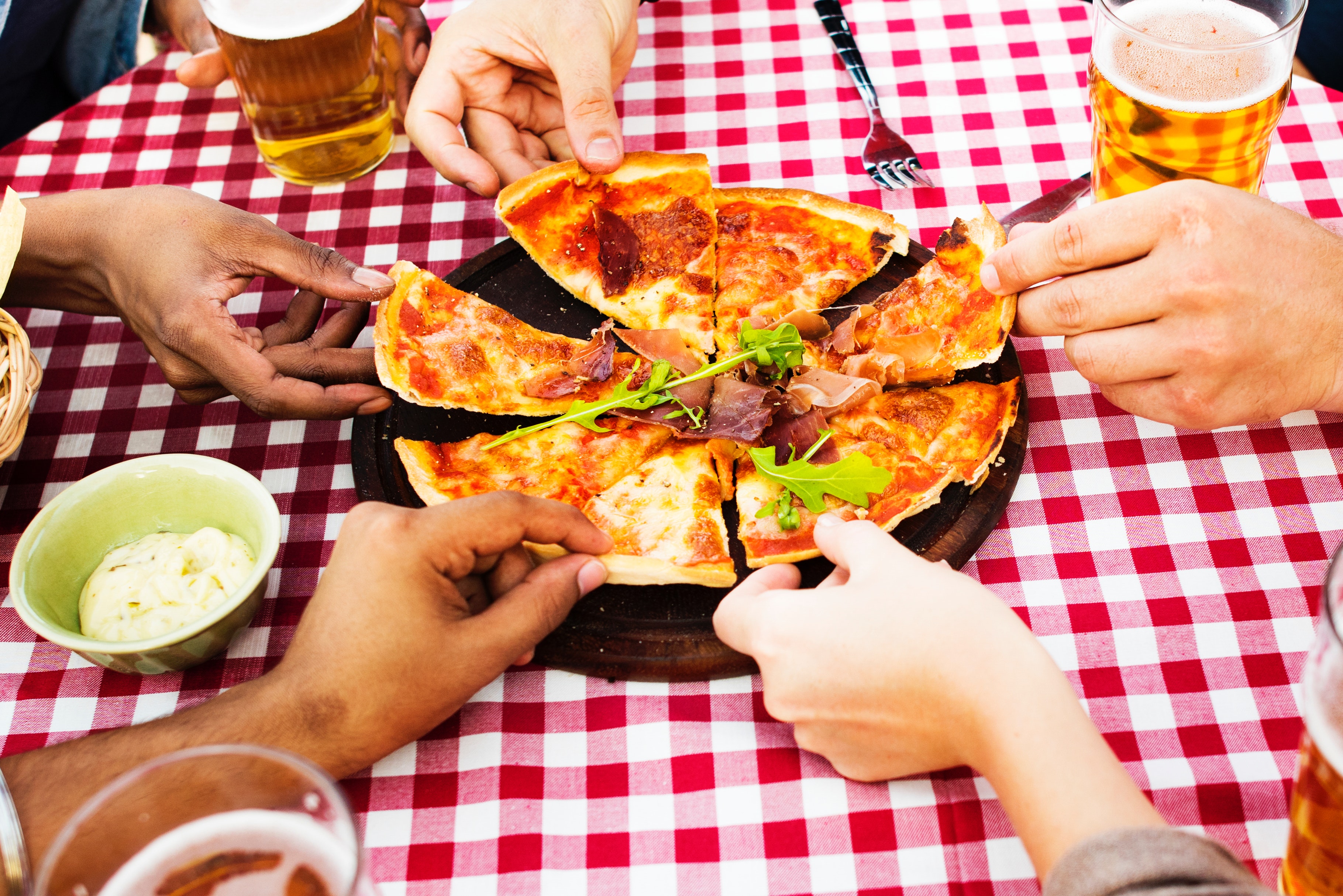Food sharing, an age-old practice deeply rooted in human history, has evolved into a multifaceted concept that encompasses social, cultural, economic, and environmental dimensions. As we delve into this captivating realm, we’ll explore the motivations, benefits, and challenges associated with sharing food, while also examining the innovative platforms and initiatives that are shaping its future.
Overview of Food Sharing

Food sharing is a practice that has existed throughout human history, fostering social bonds and ensuring the survival of communities. It involves the distribution of food resources among individuals or groups, often within a specific social or cultural context.Food sharing practices vary widely across cultures and societies.
In some communities, it is customary to share food with family members, neighbors, or friends during meals. In other cultures, food sharing may be formalized through communal feasts, potlucks, or food banks.
Historical Significance
Food sharing has played a crucial role in human evolution and social development. During prehistoric times, sharing food within hunting and gathering groups ensured the survival of individuals and the group as a whole. It fostered cooperation, strengthened social bonds, and allowed for the exchange of resources.As
societies became more complex, food sharing practices evolved to reflect social hierarchies and cultural norms. In some cultures, food sharing became a way to express hospitality, generosity, and social status. In others, it served as a means of redistribution, ensuring that all members of the community had access to food.
Types of Food Sharing Practices
Food sharing practices can be categorized into several types:
Communal Dining
This involves sharing food during a meal, often within a family or group setting. It fosters a sense of togetherness and strengthens social bonds.
Potlucks
These are social gatherings where participants bring dishes to share, creating a diverse and communal dining experience.
Food Banks
Food banks are non-profit organizations that collect and distribute food to individuals and families in need. They play a vital role in combating food insecurity and providing access to nutritious food.
Gift-Giving
Sharing food as a gift is a common practice in many cultures, expressing appreciation, gratitude, or well wishes.
Hospitality
Offering food to guests is a traditional form of hospitality, showing respect and generosity.
Motivations for Food Sharing

Food sharing is a deeply rooted social and cultural practice with profound implications. Various factors contribute to the motivations behind sharing food, ranging from social bonds to economic benefits.
Social and Cultural Factors
Food sharing fosters a sense of community and belonging. It is often an expression of hospitality, generosity, and a way to strengthen social ties. In many cultures, sharing food is an integral part of social gatherings, celebrations, and rituals.
Additionally, food sharing plays a role in cultural identity. It can be a way for individuals to connect with their heritage and traditions. By sharing food, people can preserve and pass on culinary knowledge and customs.
Economic and Practical Benefits
Food sharing can also provide economic and practical advantages. It allows individuals to access a wider variety of food, especially in areas with limited resources. By sharing surplus food, individuals can reduce waste and save money.
Furthermore, food sharing can promote healthier eating habits. When people share meals, they are more likely to consume a balanced diet that includes a variety of nutrients.
Benefits of Food Sharing

Food sharing offers numerous benefits, ranging from improved nutrition and health to environmental sustainability.
Nutritional and Health Benefits
Sharing food fosters a more balanced and diverse diet. When individuals share their meals, they have access to a wider variety of nutrients, vitamins, and minerals than they would if they ate alone. This diversity helps ensure that all participants receive the essential nutrients their bodies require.
Furthermore, food sharing promotes healthier eating habits. By sharing meals, individuals are more likely to consume home-cooked meals, which tend to be more nutritious than restaurant or takeout food. Home-cooked meals often contain fewer processed ingredients, added sugars, and unhealthy fats.
Environmental and Sustainability Advantages, Food sharing
Food sharing also has significant environmental benefits. By reducing food waste and promoting sustainable consumption, it contributes to a more sustainable food system.
When food is shared, it is less likely to be wasted. Sharing allows individuals to consume leftovers, reducing the amount of food that ends up in landfills. Landfills contribute to greenhouse gas emissions, and reducing food waste helps mitigate these emissions.
Additionally, food sharing encourages the use of local and seasonal produce. When individuals share meals, they are more likely to use ingredients that are in season and grown locally. This reduces the environmental impact associated with transportation and refrigeration.
Question & Answer Hub
What are the different types of food sharing practices?
Food sharing practices vary widely across cultures and contexts, including communal meals, potlucks, food banks, and online platforms that connect individuals with surplus food.
What are the main benefits of food sharing?
Food sharing offers numerous benefits, including reducing food waste, promoting social interaction, fostering a sense of community, and providing access to nutritious food for those in need.
What are the challenges associated with food sharing?
Food sharing can pose challenges related to food safety, logistics, liability, and cultural norms that may hinder its widespread adoption.
